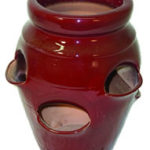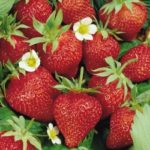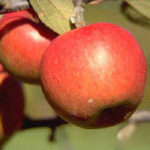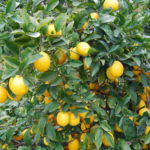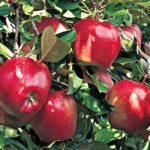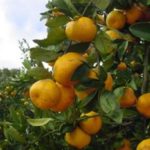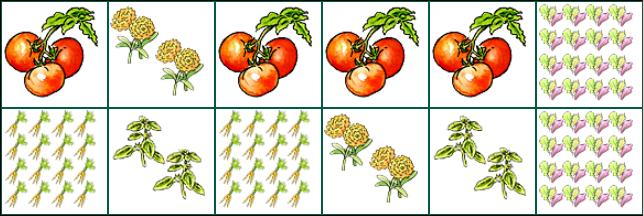I’m in the process of building the raised beds for our vegetable garden – you can see the post here.
In Search of a Non-Poisonous Vine
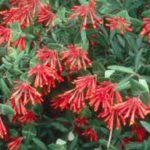 We were going to plant Carolina jessamine for our arbor trellis until I read that all parts of the plant are poisonous. 🙁 Mike and I did some research on our own, but we were having trouble coming up with a viable alternative so I asked a Denton County Master Gardener for a recommendation.
We were going to plant Carolina jessamine for our arbor trellis until I read that all parts of the plant are poisonous. 🙁 Mike and I did some research on our own, but we were having trouble coming up with a viable alternative so I asked a Denton County Master Gardener for a recommendation.
In my opinion, the most important part of the DCMG’s answer was the explanation that most plants are poisonous (or will at least cause a stomachache) if eaten, so teach the kids not to eat plants unless Mom & Dad say it’s okay. 🙂
She also suggested that it might be easier to avoid the most toxic plants rather than trying to get 100% safe plants, and two links were provided for reference:
(1) a list of common toxic and non-toxic plants from Washington state’s poison center (not a complete list), and
(2) a list of Plants Toxic & Non-Toxic to Dogs, with the caveat that there is no guarantee that what is safe for a Briard is safe for children. 🙂
Mike and I compared the suggested lists with a list that Mike generated from the Michigan Bulb Co.’s website, where you can use their “Plant Digger” to find plants suited for your Grow Zone, and a list generated by the Earth-Kind Plant Selector from the Aggie Horticulture website.
After all of that, we finally decided to plant Coral Honeysuckle in the planter boxes at the bottom of the arbor. Coral Honeysuckle. Hooray! 🙂
Local Resources: The DCMGA
Are you looking for some gardening help in the Denton area? Check out the DCMGA:
The Denton County Master Gardner Association (DCMGA) has a mission:
…to educate Denton County residents about safe, effective and sustainable horticultural practices that promote development of healthy gardens, landscapes and communities.
The DCGMA is a volunteer program under the guidance of the Denton County Horticulture Agent. (I came across their website while exploring the Texas AgriLife Extension Service’s website.) There’s a lot of helpful information available on the DCMGA website, including information specific to North Texas Gardening.
I was beginning to feel a little overwhelmed trying to sift through the gardening information I had been reading on the internet and in books, so I emailed the DCMGA help desk with my questions. (You can even give them a call, too!)
Within three days, I received a professional, courteous, and helpful reply with science-based answers. Thank you, DCMGA!
Aunt Sue’s Barn
A couple of weekends ago, the Messy Blessings family visited Aunt Sue’s Barn, a pick-your-own Community Supported Agriculture (CSA) farm that uses organic farming practices. (You can read more about CSA here or here.)
Aunt Sue was kind enough to give us a tour so that we could get a feel for the farm and whether or not membership was for us. The kids loved exploring the farm, and Mike and I found the farm’s projects, plans, and practices quite interesting.
We decided to join for the following reasons:
- The opportunity to spend time on the farm harvesting crops will connect us to nature, our food, and the farm’s community of members.
- Participating in the community agriculture experience, by harvesting crops and observing or helping out at the farm, will provide learning opportunities for our family.
- Members have first access to what is produced (at various scheduled times), and the membership fee includes the produce we’ll receive.
- Aunt Sue’s Barn will be growing several varieties of blackberries and raspberries, as well as some peaches and nectarines. Also growing will be seasonal vegetables like garlic, asparagus, onions, multiple types of squash, watermelons, and hyacinth bean vines. Maybe even some apricots and pears. In the fall, there might be pumpkins! Rosemary and lavender are also on site.
- We believe that our membership at Aunt Sue’s Barn will be a nice complement to our own gardening efforts here at home.
- The farm is conveniently located.
Note: For whatever reason, the apostrophe in the post’s title isn’t showing up. 🙁
Strawberries!
Last year, we bought a small strawberry jar, similar to the one pictured below, but we never got around to planting strawberries. This year, we hope to use our strawberry jar to grow some yummy strawberries!
- Strawberry Jar
- Yummy Strawberries!
Fruit Trees
Last year, we planted a nectarine tree and a peach tree. This year, we plan on adding four trees:
- Braeburn Apple
- Meyer Lemon
- Red Delicious Apple
- Satsuma
Originally, we were going to plant one apple and one pear, but whilst doing our homework, we learned that apple and pear trees are not self-pollinating.
Early Sprouts
 Last year, when my inner-Scholarly Mama started to call our little container garden our “Explore & Discover Garden,” I had the hope that it would provide a source of learning for our children as well as a meaningful and purposeful way for us to spend time together as a family.
Last year, when my inner-Scholarly Mama started to call our little container garden our “Explore & Discover Garden,” I had the hope that it would provide a source of learning for our children as well as a meaningful and purposeful way for us to spend time together as a family.
We’re turning that hope into a plan this year. I found a few early childhood curricula based on gardening and outdoor learning, and Mike and I decided on Early Sprouts, a preschool curriculum that I found through Gardening with Kids, which I came across via the National Gardening Association’s website.
I’m happy to report that our book should arrive within a week. 🙂 I’m looking forward to adapting lessons for our region and our family’s needs!
Carolina jessamine
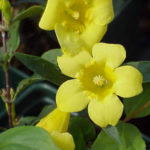 Today I learned that the lovely Carolina jessamine we were hoping to plant near the base of the arbor and twine through the trellises is poisonous! In fact, every part of the plant is poisonous. 🙁
Today I learned that the lovely Carolina jessamine we were hoping to plant near the base of the arbor and twine through the trellises is poisonous! In fact, every part of the plant is poisonous. 🙁
Planter Bed 2
We used Gardner’s Supply Kitchen Garden Planner to help plan our garden. Here is a screen shot of Planter Bed 2:
(Click image to zoom.)
Row 1: Cucumbers, rosemary, hot peppers, bell peppers
Row 2: Dill, radishes, cilantro, summer squash, winter squash, parsley
If you look at our garden site plan, you’ll see that Planter Bed 2 is located nearest the picket fence bordering the yard (facing the back of the house).
Planter Bed 1
We used Gardner’s Supply Kitchen Garden Planner to help plan our garden. Here is a screen shot of Planter Bed 1:
(Click image to zoom.)
Row 1: Tomatoes, calendula (pot marigolds), more tomatoes, leaf lettuce
Row 2: Carrots, basil, carrots, calendula (pot marigolds), basil, leaf lettuce
If you look at our garden site plan, you’ll see that Planter Bed 1 is located nearest the back fence line.
